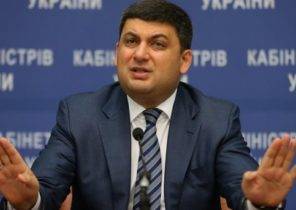
Moscow authorities will tell the migrants how to behave in the comics with the heroes of Russian fairy tales. Experts indicate that in the memo migrants are opposed to ethnic Russian, and that its content would be incomprehensible to a person, insufficient knowledge of the Russian language.
At the end of October, the Department of national policy, interregional ties and tourism of the ordered training manual “On the rules of behaviour of the migrant in the city of Moscow”. This notice appeared on the procurement website.
In the specification, the Department indicated that the memo needed to “maintain a positive image of the capital as a city with high-tech tools and the required infrastructure to implement the programme on integration and adaptation of foreign migrant workers in the Russian society”. It is expected that the manuals will reduce “the level of tension among Muscovites and within migrant background”.
Won the competition of the Regional public organization “Support of migrant workers of Moscow”, offering to do the job 7 million. Two months later, by the end of December she prepared a 100-page illustrated brochure with a circulation of 50 thousand copies in the Russian language. Experts were members of the special Committee under the Council for nationalities under the Department netzpolitik.
This week, the Department of national policy launch this project and begin distribution of the memo, said the head of “Support of migrant workers of Moscow” Alexander Kalinin.
Bi-bi-si has studied the recommendations of the city authorities for visitors.
A 100-page glossy brochure consists mainly of explaining comics. Among the heroes three heroes, who represent law enforcement agencies, Vasilisa the wise, Snegurochka and Kupava, Yuri Dolgoruky, Kashchei the Immortal, and so on. “The Commission chose a theme. First, we wanted to combine the characters of Russian folklore with the fairy tales of the CIS countries, but later refused from this idea — then heroes would be too much,” explains Kalinin. According to him, comics characters created “honored artists of Russia, who painted the Cathedral of Christ the Saviour, metro station Mayakovskaya and so forth.”
“Come to Moscow for foreign citizens. We also believe their fairytale characters, and their meet fairy heroes from Russia, who tell visitors about the rules of stay”, — explained the plot of the comic Kalinin.
Vasilisa the wise was originally on the cover with her hair. “But the Commission’s experts thought that long hair means promiscuity, not married. So we decided to braid her braid,” — says Kalinin.
Characters-the first migrants were signed at the national level, but then this idea have refused, “so no one was offended,” said Kalinin.
The content of the handout was developed by the lawyers specializing in the rights of migrants, including immigrants from neighboring countries, he adds. The language of brochures requested adjustments for migrants. This part of the work done by the teachers who are testing migrants ‘ knowledge of the language; however, the results of this satisfied not all.
The Department of natspolitike planning meetings with the ambassadors of CIS countries to discuss with them the distribution of the memo and its translation into the languages of these countries, says Kalinin. The employee a press-services of the Department on all issues bi-Bi-si on the handout said that so far no information, and “all in.”
Here the obvious ethnicity of the discourse on migrants and Moscow as ostensibly the Slavic city of heroes, the Director of the research center of migration and ethnicity Ranepa Evgeny Varshaver. “Clearly resuscitated the confrontation of the heroes of Russian hordes”, — the expert believes.
However, in General, the use of illustrations helps to provide the body of law that applies to migrants.
The memo consists of four chapters and an Annex with background information. The first Chapter is “Rules of conduct of a foreign citizen in the city of Moscow”.
“The main rule of behavior on the street — not to bring inconvenience and trouble to others,” — warn the authors.
Visitors are advised not to turn around and look back after passing women, is not on the street, not to talk on the street loud and long.
“Today, as a hundred years ago, hasty familiarity as unpleasant to many people as an unnecessary annoyance. So take the time to go to “you” making new acquaintances”, — stated in podglavica “Rules of communication”. Also, the authors recommend not to rush to turn just held acquaintance into friendship. “It may look annoying,” reads the memo. To show the desire to maintain business and personal contacts in the future, migrants are advised to distribute your business cards.
The authors of the booklet come from the message that rules of conduct are in Moscow, said Varshaver. “But for me the news on the street is impossible, and I Moskvich in the third generation. The problem is that the rules in fact no, they are not explicated. Attempt to explain them should be made through public dialogue, and not behind the scenes when the rules proclaimed by the Moscow Department”, — the expert believes.
The memo focused primarily on illegal migrants, says Kalinin. “We want to raise among them the level of legal awareness,” he says.
The first thing the visitors explained that the need to obtain a migration card, “check” and patent work. In explaining the comic Kashchey the Immortal amid piles of money suggests migrants to apply for construction in the Moscow region, although they have patents in Moscow. But the maiden explains that the patent issued in Moscow, is valid only on the territory of the city.
The authors emphasize that the police has the right to check their documents. In the comic, where the police presented in the image of Hercules with the inscription “MVD” on the chest reads: “Remember that police officer anything you do not blame, and his request to show the documents not humiliate you.”
The law is necessary to explain easier, in particular the “90 out of 180”, in which every moment of time the migrant needs to stay in Russia for less than 90 days prior to this day of 180 days, said Varshaver. “Our research shows that most migrants do not understand how to follow this rule, resulting in the bans and deportation,” he said.
So the aliens have better learned the information from the memo, the authors propose to them to pass several tests. The most difficult test on knowledge of rules of paperwork. “The citizen of Tajikistan living in Moscow for 90 days. Then he left Russia and immediately drove back (I made “exit-entry”). He then applied to the IMC to issue the patent. But he refused. Why?” — reads one of the questions.
In the test in the knowledge of the Russian language, the maiden asked: “outside it’s cold today so I wore… A) Panama, B) glasses C) coat.”
A crossword puzzle on the history of Moscow somehow, the whole is devoted to facts about the life of Peter I. for Example, visitors are invited to guess what is the fear of large spaces, which had suffered little Peter I (10 letters) or the name of the mother of Peter the great (9 letters).
However, at the end of the brochure given the keys to the tests.
“The level of Russian language brochures complex. I can read, but not sure that the majority of people, even basic Russian, to cope with this booklet. However, even if translated, the rural migrant from Tajikistan this Tajik memo even seem difficult,” says Varshaver.
A tour of Moscow called “the curious Routes of migrant” in the comics, the lead character of Yuri Dolgoruky. On each page of the Chapter printed pictures of famous buildings and monuments of the capital, and pririsoval Dolgoruky calls them. Visitors are also shown a photo of Moscow metro stations, temples, synagogues, mosques and so on. “We are already handing out brochures at airports, in the markets,” says Kalinin.
Sightseeing tours should be on the map, the migrants do not understand the photos of attractions, where to go, said Varshaver.
According to the expert, most likely this booklet will be distributed to leaders of the Diaspora in proportion to migration statistics. “And there they will lie dormant in their bright offices. Circulation in 50 thousand copies — about anything. In Moscow, the leaders of the Diaspora are far from simple migrants. However, in General, any brochure is better than none,” concludes Varshaver.







